Types of Wood
We offer a premium selection of wood that are hard to find anywhere else in Atlanta. Pecan, Black Walnut, Red Cedar, White Oak, Red Oak, Maple and more!
Pecan
- Growth in South-central United States and Mexico
- Tree Size: 100-130 ft (30-40 m) tall, 2-4 ft (.6-1.2 m) trunk diameter
- Average Dried Weight: 46 lbs/ft3 (735 kg/m3)
- Grain/Texture: Grain is usually straight, though occasionally wavy. Middle part shows a warm brown, the edges are much lighter. The bark has a matching, darker brown.
- Knots, inclusions and forks show great patterns.
- Comments: Pecan is among the hardest and strongest of woods
native to the United States. The wood is commonly used where strength or
shock-resistance is important. As the name implies, the tree is responsible for producing Pecan nuts commonly used in snacks and cooking recipes, and is the state tree of Texas.
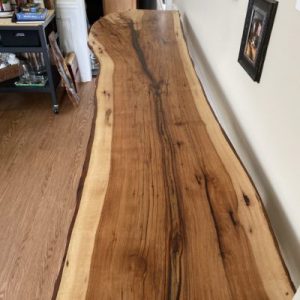
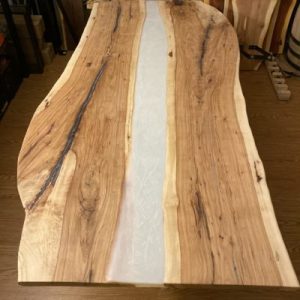
Black Walnut
- Growth in Eastern United States
- Tree Size: 100-120 ft (30-37 m) tall, 2-3 ft (.6-1 m) trunk diameter
- Average Dried Weight: 38 lbs/ft3 (610 kg/m3)
- Grain/Texture: Grain is usually straight.. Middle part can be very dark, depending on the finish applied. The edges build a nice contrast. Does not usually come with bark.
- The black & white contrast makes for a modern look and matches many styles.
- Considered a premium domestic hardwood, prices are in the high range for a domestic species.
- Comments: It would be hard to overstate Black Walnut’s popularity among woodworkers in the United States. Its cooperative working characteristics, coupled with its rich brown coloration puts the wood in a class by itself among temperate-zone hardwoods. To cap it off, the wood also has good dimensional stability, shock resistance, and strength properties.
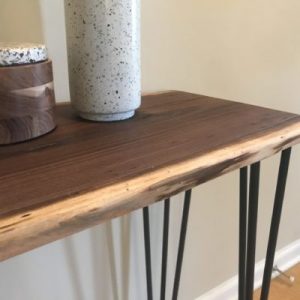
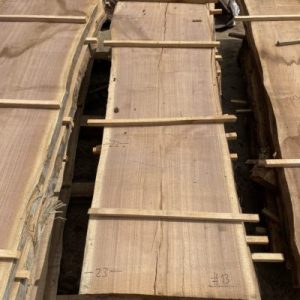
Red Cedar
- Growth in Eastern United States
- Tree Size: 100-115 ft (30-35 m) tall, 3-4 ft (1-1.2 m) trunk diameter
- Average Dried Weight: 33 lbs/ft3 (530 kg/m3)
- Grain/Texture: Has a straight grain, usually with knots present. Has a very fine even texture. Excellent for Epoxy Resin inlays.
- Regarded as excellent in resistance to both decay and insect attack. Aromatic Red Cedar has a distinct and tell-tale scent.
- Comments: Although Red Cedar is included in the cypress family which includes many species of cedar, it’s perhaps more closely related in junipers in the genus Juniperus. In tree form, it is more commonly called Eastern Redcedar, while the wood itself is usually referred to as Aromatic Red Cedar.
Though Eastern Redcedar trees are widely distributed throughout the eastern half of the United States, it is a very slow-growing species, and most trees harvested tend to be fairly small in diameter. Because of this, Aromatic Red Cedar boards tend to be knotty and narrow. This calls for unique features and rich character. - Sepending on exposure to sunlight red cedar turns from pink to brown.

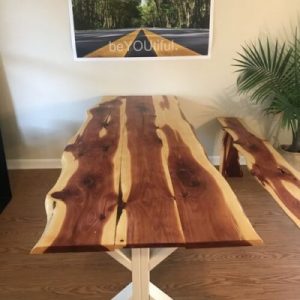
White Oak and Red Oak
- Growth in Southeastern United States
- Tree Size: 80-100 ft (25-30 m) tall, 3-5 ft (1-1.5 m) trunk diameter
- Average Dried Weight: 42 lbs/ft3 (675 kg/m3)
- Grain/Texture: Has medium-to-large pores and a fairly coarse grain.
- Red Oak has a light to medium reddish-brown color, though there can be a fair amount of variation in color. Conversely, White Oak tends to be slightly more olive-colored, but is by no means a reliable method of determining the type of oak.
- Comments: very common in furniture.

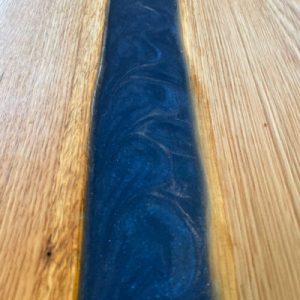
Maple
- Growth in Eastern United States
- Tree Size: 80-115 ft (25-35 m) tall, 2-3 ft (.6-1.0 m) trunk diameter
- Average Dried Weight: 33 lbs/ft3 (530 kg/m3)
- Grain/Texture: Grain is generally straight, but may be wavy. Has a fine, even texture. The growth rings tend to be lighter and less distinct in soft maples than in hard maple. Can have very rich features from ambrosia.
- Comments: Red maple is common over a very large area of the eastern Untied States, and its wood tends to be slightly heavier, stronger, and harder than other species in the grouping of soft maples, though it is still not as strong as hard maple.

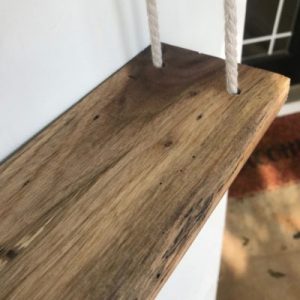
Other Types of Wood
Maintaining a large network of suppliers, we work with many different types of wood.
From Californian Cottonwood to Construction Wood everything is possible!

